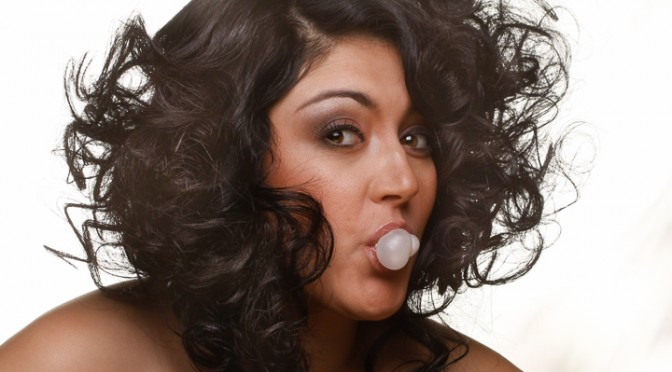
Lighting conveys mood.
Most of the portraiture you see on this blog is of the type described as low key.
Tones are dark and there’s lot of shadows and highlights suggesting 3- dimensionality.
So I thought I might write about the other type of lighting seen mostly in studio shoots, the type I don’t use as often. 😉
High key portraits tend to have diffused or very little shadows.

There’s also a lot of information on the right side of the histogram, with a lot of peaks on the right where highlights are recorded.
It’s not about indiscriminately blowing out the highlights and clipping the highlights either which is what over-exposure is about.
If you see the highlight areas blinking like crazy in your camera’s LCD monitor after taking the picture, you’re probably not doing it right.
I call those the ‘blinkies’ because it’s the camera’s way of telling you there is no detail in those areas and you don’t have to be that heavy-handed.
So do I prefer one type over the other?
Not particularly.
A versatile photographer should be comfortable doing both since clients might ask for that.
High key portraits require a lot more lighting control and often they require a lot more power from flash units.
As a result, these high key lighting can be more time consuming.
Speedlights can be used but for better control, studio lights are a better choice.
I went back to a shoot I did at Hello Beautiful Salon for inspiration on this post.
The shoot was for some hair stylists who wanted pictures for a contest.
Equipment
- 3 800 XLS White Lightning studio strobes
- 1 Softbox
- 2 Silvered 72″ umbrellas
- 1 Photoflex reflector
- White backdrop draped over a background stands
- Paul C Buff Cybersync radio slaves
Setting Up

Once I had my shooting area staked out, I tried to make sure I had enough distance between my subject and the white backdrop.
I also made sure I had enough room to shoot with a long lens.
I wasn’t concerned that my white backdrop was wrinkled.
I knew by over-exposing the backdrop by 1/2 stop intentionally I could make the wrinkles disappear.
So I pointed 2 silvered umbrellas to give an exposure of f16.
In this small area even at minimum power of the WL800, I was easily getting f16 @ ISO 400.
I did a few quick tests to see if I was getting any hot spots or unevenly lit areas in my backdrop.
Then it was time to adjust the main or key light inside the softbox.
I set that light to give me between f8 and f11.
Hint: since the backdrop was already evenly lit, it is far easier to leave that power output fixed. So all I had to do was adjust the light on my main light to give 1 to 1 ½ stops less light.
High key outside the studio
Trends come and go with the artsy world.
These days we see a lot of brides in white gowns photographed against heavily backlit backgrounds.
I like the use of that but what I dislike is the intentional-shooting -into-the-sun look to cause flare.
Flare causes loss of contrast, terrible color shifts and artifacts and often these are NEVER fixable in post.
It’s best to shield the lens from light sources from directly shining into the front of the lens for this reason.
In post production if you want to add flare, you can always add that afterwards.
Hint: it’s a filter in Photoshop under the Filter menu>Render>Lens Flare
When you shoot it in camera on location, you are stuck with it.
It would be the equivalent of using a color filter or special effect filter over the lens and you would be painting yourself into a corner, why work like that?
So when might you choose high key?
You might choose this lighting when photographing:
- models or products that clients will be compositing into covers for printed materials
- when you want to convey an upbeat, cheery or happy mood
- products which are high quality, upscale & expensive. Look no further than Apple products
- generally speaking subjects that are feminine in nature
Peter Phun Photography

Promote Your Page Too

